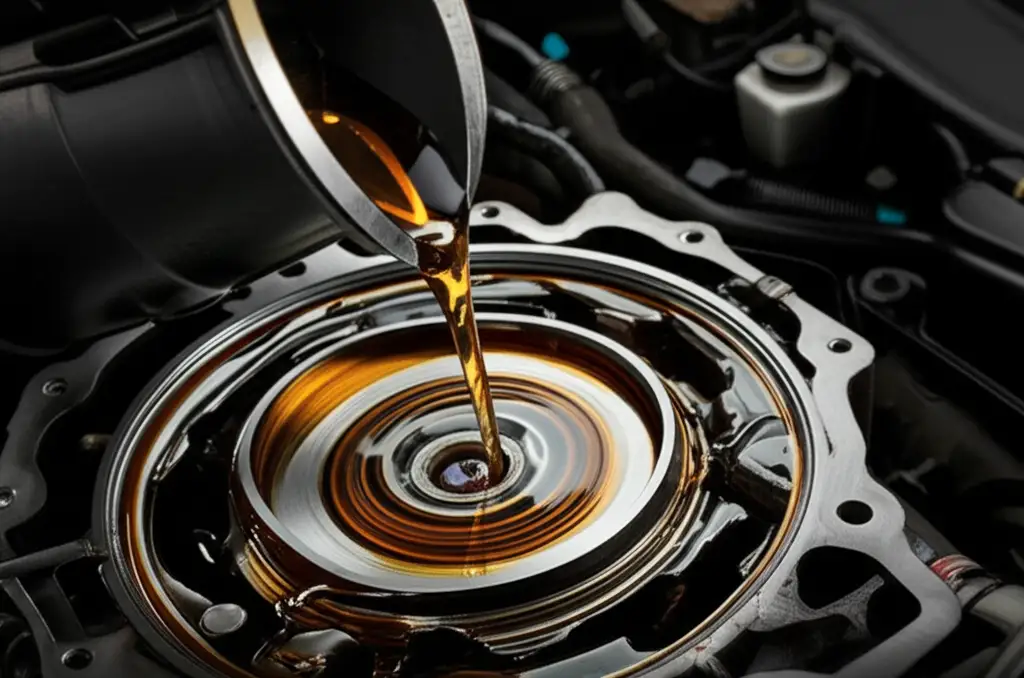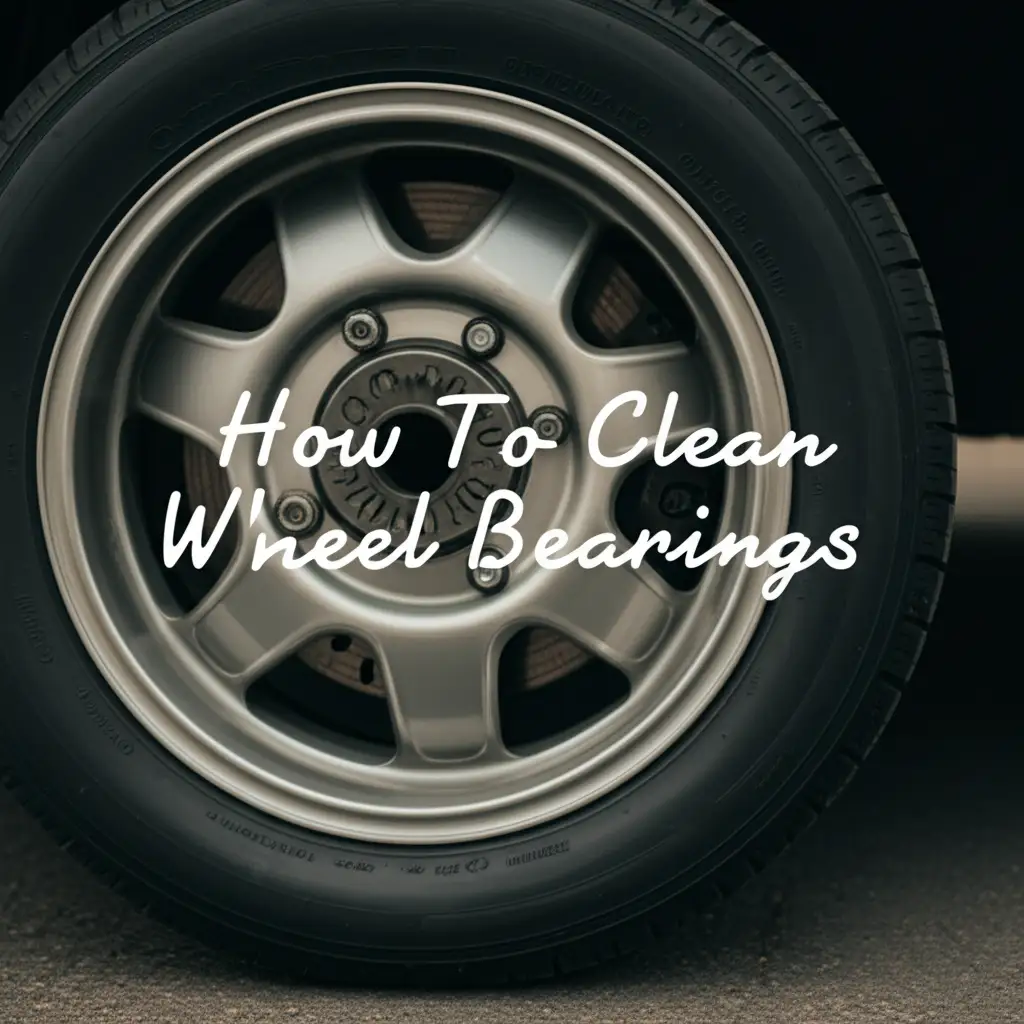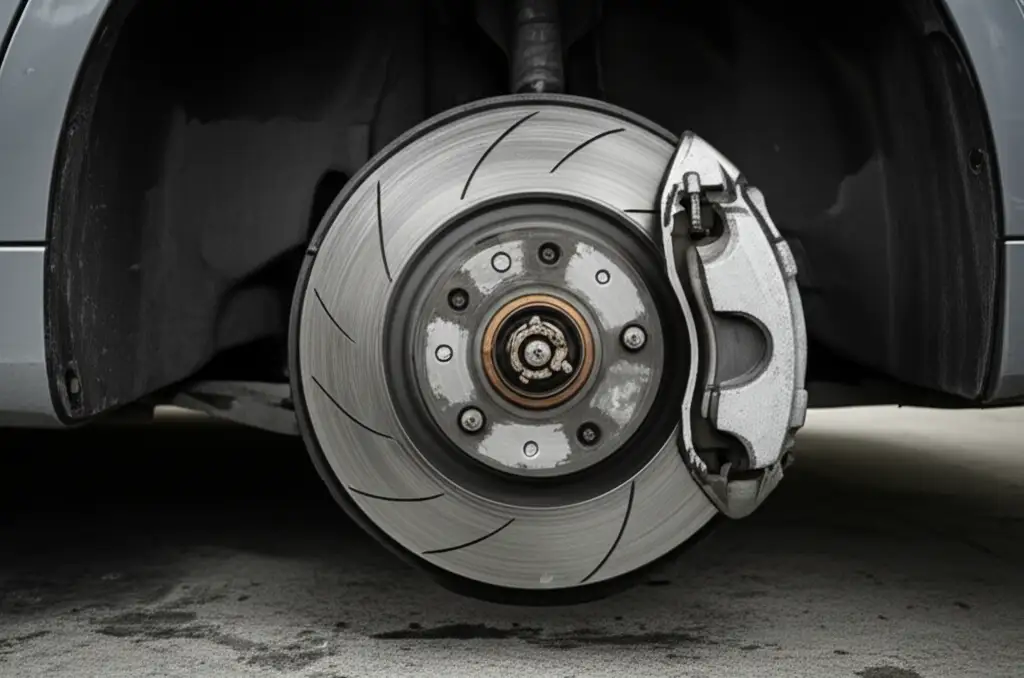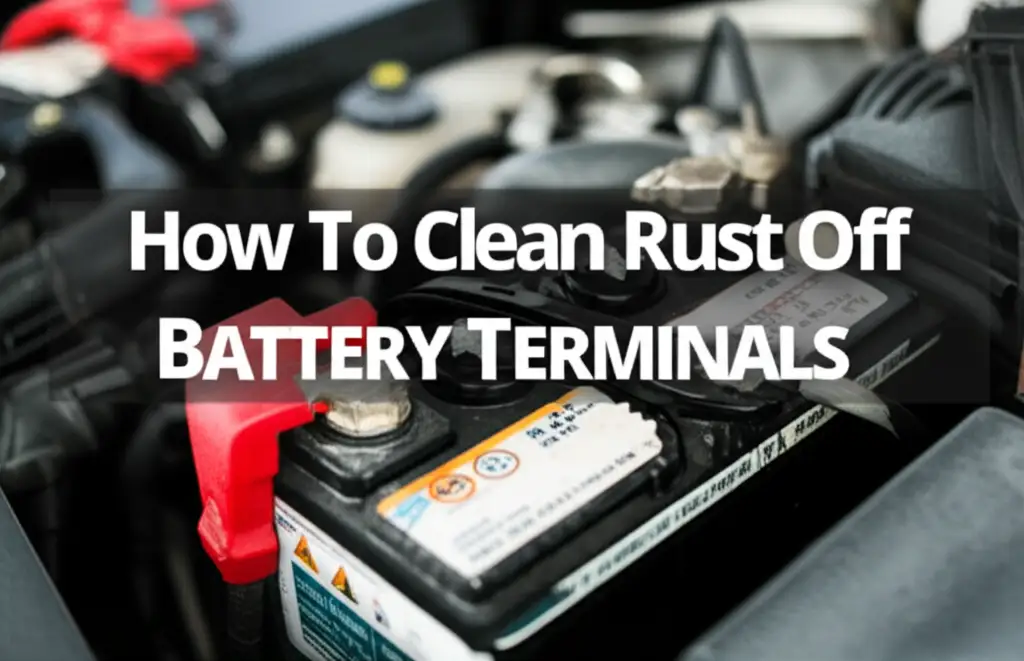· Automotive Maintenance · 15 min read
How To Clean Rust Off Brake Rotors
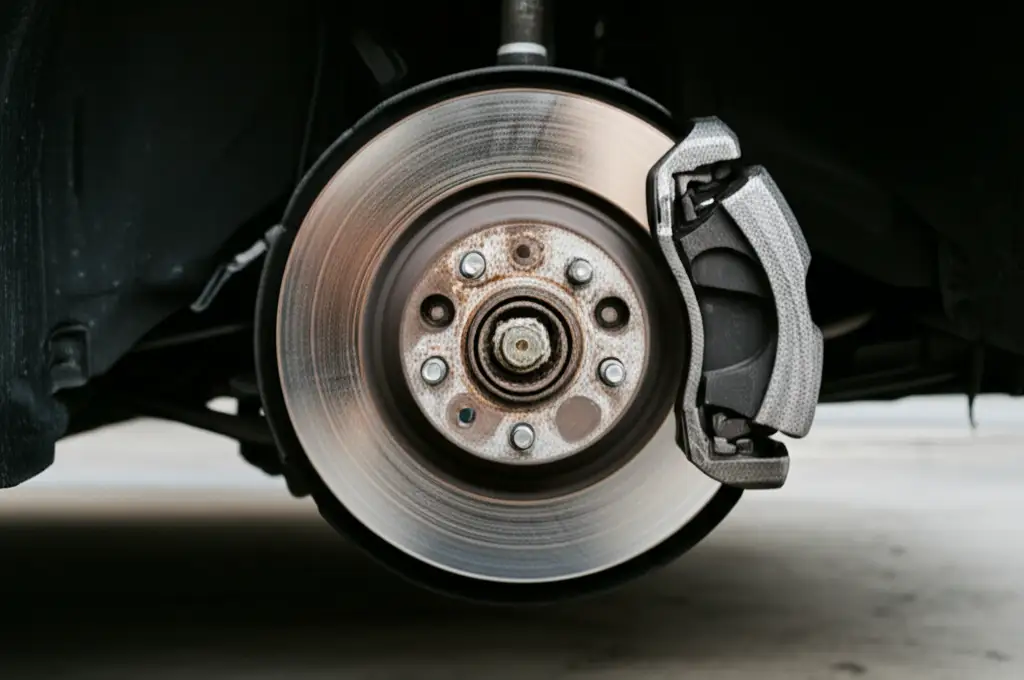
Restore Your Brakes: How To Clean Rust Off Rotors
You might notice an orange coating on your brake rotors. This is common, especially after rain or washing your car. This article shows you how to clean rust off brake rotors. We discuss simple methods for light rust and stronger solutions for more stubborn spots. Understanding why rust forms helps you keep your brakes in good shape.
Learning to handle brake rust saves you money and helps keep your vehicle safe. Rust can affect brake performance over time. It can cause vibrations or reduced stopping power. We will guide you through the process, step by step. We also cover essential tools and safety tips. By the end, you will know how to effectively remove rust and prevent its return. Keep your vehicle running smoothly.
Takeaway
- Identify rust type: Surface rust often clears with driving; deep rust needs cleaning.
- Gather proper tools: Safety gear, wire brush, brake cleaner, rust converter.
- Clean light rust: Drive a short distance, or use a wire brush and brake cleaner.
- Address heavy rust: Consider sanding or specialized rust removal products.
- Prevent rust: Apply anti-corrosion sprays, use car covers, or drive regularly.
To clean rust off brake rotors, first assess the rust severity. Light surface rust often wears off with normal driving and a few brake applications. For stubborn rust, use a wire brush and brake cleaner. Remove the wheel for better access. Apply a rust-specific product if needed. Finish by driving to let the brake pads polish the rotor surface.
Understanding Rust on Brake Rotors: Types and Causes
Brake rotors are metal discs that slow your car. They often show rust. You might see a thin layer of orange on them. This rust forms easily. It is important to know why this happens and what kind of rust you are seeing. This helps you decide how to clean rust off brake rotors.
There are two main types of rust that affect brake rotors. The first type is surface rust. This rust appears quickly. It shows up after rain, high humidity, or washing your car. The metal on rotors is iron or steel. These materials rust when they touch water and air. Surface rust is very common. It usually disappears after a few uses of your brakes. The brake pads rub against the rotor. This friction removes the thin rust layer. You often hear a slight grinding noise the first time you brake with surface rust. This sound goes away quickly.
The second type is deep or heavy rust. This rust forms over a longer period. It happens if your car sits unused for many weeks or months. This rust can pit the rotor surface. Pitting means small holes or uneven spots form on the metal. Deep rust does not go away with normal driving. It can affect how well your brakes work. It can make your steering wheel shake when you brake. This happens because the rotor surface is uneven. Deep rust needs more direct cleaning. It also shows a bigger problem that needs attention. Recognizing the difference is the first step to proper care.
Essential Tools and Materials for Rust Removal
Gathering the right tools makes the rust cleaning process easy and safe. You will need a few common items. Some are for safety. Others are for cleaning the rust itself. Having everything ready before you start saves time. This section lists what you need to effectively clean rust off brake rotors.
First, safety gear is crucial. You must protect your hands and eyes. Wear heavy-duty gloves. These protect your skin from chemicals and sharp edges. Safety glasses or goggles are also important. They keep dust and chemical splashes out of your eyes. These items are not optional. You must use them for every step of the cleaning.
Next, you need cleaning tools. A stiff wire brush is very helpful. It removes loose rust and dirt. A smaller wire brush, like a toothbrush style, can reach tight spots. Sandpaper or sanding sponges also work well. Choose a medium grit, around 80-120 grit. This is good for scrubbing off rust without damaging the rotor too much. You will also need clean rags or microfiber cloths. These are for wiping surfaces.
Finally, consider your cleaning solutions. Brake cleaner spray is a must-have. It removes grease, oil, and brake dust. It also helps with light rust. For tougher rust, you might need stronger products. A rust converter or rust remover liquid can dissolve the rust. Always read the product labels carefully. Make sure they are safe for brake components. Some people use natural solutions like white vinegar or baking soda paste for minor rust, which can be effective on some surfaces. For general rust cleaning on various items, knowing how to clean with vinegar and baking soda offers versatile solutions. Having a spray bottle for applying solutions can also be useful. Ensure you have proper disposal methods for any chemical waste.
Simple Steps to Clean Light Surface Rust
Light surface rust is the most common type you will see. It looks like an orange film on your brake rotors. This rust usually forms after the car sits for a short time, especially in damp weather. Cleaning this type of rust is often simple. You might not even need special tools. This section explains how to handle light surface rust effectively.
Often, light surface rust clears on its own. When you drive your car, the brake pads rub against the rotors. This friction acts like a gentle scrubbing pad. The first few times you press the brake pedal, you might hear a slight scraping sound. This is normal. It means the pads are removing the rust. After a few stops, the sound should stop, and the rotors will look shiny again. If your car has been parked for just a day or two, try driving it first. Make a few careful stops at low speeds. This often solves the problem without any manual work.
If driving does not remove all the rust, you can clean it manually. First, ensure your car is safely parked. Use wheel chocks behind the tires that you are not working on. You might not need to remove the wheel for light rust. You can often reach the rotor through the wheel spokes. For a clearer view or easier access, lift the car and remove the wheel. For tips on how to manage this without a full wheel removal, you might find valuable insights in articles on how to clean brake rotors without removing wheel.
With the wheel off or good access, take your wire brush. Gently scrub the rusty areas of the rotor. Focus on the main contact surface where the brake pads touch. Do not press too hard. You just want to remove the loose rust. After scrubbing, spray the rotor with a good brake cleaner. Brake cleaner helps remove any remaining rust particles and brake dust. It also degreases the surface. Let it air dry completely. The rotor should now be clean and shiny. This method is quick and effective for most surface rust issues.
Tackling Stubborn Rust on Brake Rotors
Sometimes, surface rust is more than just a light film. It can be thicker or cover more of the rotor. This type of rust needs a bit more effort. It might not come off with just a wire brush. This section explains how to deal with more stubborn rust spots. You will need a few more tools and a bit more time.
Before you start, make sure your car is stable. Lift the vehicle with a jack and secure it with jack stands. This is for your safety. Then, remove the wheel to get full access to the brake rotor. Always work on one wheel at a time. This keeps the car balanced and safe. With the wheel off, you can clearly see the entire rotor surface. This helps you target the areas with stubborn rust.
Once the wheel is off, start with the wire brush again. Scrub the rusty areas with more pressure this time. You want to dislodge as much rust as possible. For areas that resist the wire brush, use sandpaper or a sanding sponge. Choose a medium-grit sandpaper, like 80-grit or 100-grit. Rub the sandpaper in circular motions over the rust spots. This will abrade the rust away. Be careful not to sand the rotor too aggressively. You want to remove the rust, not carve into the metal. The goal is a smooth surface where the brake pads make full contact. If you have any rust on your stainless steel parts, the methods are similar, and you might find general tips in guides like how to clean rust off stainless steel.
After sanding, wipe down the rotor with a clean rag. Then, spray it generously with brake cleaner. This removes any dust or small rust particles created during sanding. It also cleans any grease or oil. Let the rotor dry completely before putting the wheel back on. Spin the rotor by hand to check for any remaining rust. The surface should feel smooth and look clean. This process helps restore the rotor’s surface. It ensures proper brake function. Repeat this process for each wheel that has stubborn rust.
Advanced Methods: When Rust is Deep
Deep rust is a more serious issue. It means the rust has eaten into the metal of the rotor. This can create pits or uneven surfaces. Normal cleaning methods might not be enough for deep rust. This section explores advanced methods to clean rust off brake rotors when the corrosion is severe. These methods require more care and might involve professional help.
If your rotors have deep pitting or significant rust that affects the smoothness, consider using a rust converter or a specialized rust remover liquid. A rust converter changes rust into a stable black coating. This coating can then be painted over. It stops further rust. Rust remover liquids dissolve the rust chemically. Always read product instructions carefully. These chemicals can be strong. Wear proper safety gear. Apply the product only to the rusty areas. Avoid getting it on brake pads or other brake components. Follow the recommended soak times. Then, rinse or wipe as directed. This method can save rotors that have heavy rust, but always check for product compatibility with brake metals.
For very deep rust or uneven rotor surfaces, machining the rotors might be an option. This means taking the rotors to a machine shop or a garage. A special machine shaves off a thin layer of metal from the rotor surface. This creates a fresh, smooth surface. Machining removes pits and makes the rotor perfectly flat again. However, rotors have a minimum thickness. If the rotor is too thin after machining, it becomes unsafe. A mechanic will check the rotor’s thickness before machining. If it is already too thin, you must replace the rotor. Machining saves money compared to new rotors, but only if enough material remains.
In some cases, especially with very old or severely corroded rotors, replacement is the best choice. If the rust has caused deep grooves or cracks, or if the rotor is below its minimum thickness, it is unsafe to use. Replacing rotors ensures your braking system works correctly. It removes all rust issues completely. This also means you get new, clean surfaces for your brake pads. While it costs more upfront, it offers the best long-term solution for safety and performance. Always prioritize safety when dealing with brake components.
Preventing Future Brake Rotor Rust
Cleaning rust off brake rotors is important. But preventing it from forming is even better. A few simple habits can keep your rotors clean and extend their life. This section shares practical tips to minimize future rust on your brake rotors. Being proactive saves you time and effort later.
One effective way to prevent surface rust is to drive your car regularly. When you drive, the brake pads rub against the rotors. This action polishes the surface. It removes any new, tiny rust spots before they grow. If your car sits for long periods, especially in humid climates, rust will form quickly. Try to drive your car at least once a week. Even a short drive with some brake applications helps. This simple habit keeps the rotor surfaces active and clean.
Applying a protective coating can also help. Some anti-corrosion sprays or rust inhibitors are available for metal surfaces. You can spray these products on the non-contact areas of the rotor. These are the parts that the brake pads do not touch. This helps prevent rust on the hub and edges of the rotor. Do not spray these products on the friction surface. This would make your brakes slippery and unsafe. Always read product labels carefully. Make sure the product is safe for use on car parts. A thin layer can offer good protection against moisture.
Proper storage also plays a role. If you store your car for a long time, consider parking it in a dry garage. A climate-controlled garage is even better. This reduces moisture exposure. Using a car cover can also protect your vehicle from condensation. Condensation leads to rust. When washing your car, dry the rotors as much as possible. Drive the car a short distance after washing. This helps heat the rotors and evaporate any water. This simple step stops rust from forming right after a wash. Remember, keeping moisture away is key to preventing rust on your brake rotors.
Safety First: Important Considerations
Working on your car’s brakes requires careful attention to safety. Brakes are a critical safety system. Any mistakes can have serious consequences. This section covers important safety considerations when you clean rust off brake rotors. Always prioritize your safety and the safety of others.
Before you begin any work, ensure your car is parked on a flat, stable surface. Engage the parking brake firmly. If you are lifting the car, use a reliable jack. More importantly, always use jack stands. Never rely solely on a jack to hold up your car. Jacks can fail. Jack stands provide stable support. Place wheel chocks behind the wheels that remain on the ground. This prevents the car from rolling. These steps are fundamental for a safe work environment. Your life depends on these precautions.
Personal protective equipment is non-negotiable. Always wear heavy-duty work gloves. These protect your hands from sharp metal edges and corrosive chemicals. Safety glasses or goggles are also a must. They shield your eyes from dust, rust particles, and cleaning solutions. Breathing in brake dust or chemical fumes can be harmful. Consider wearing a dust mask or respirator, especially when wire brushing or sanding. Good ventilation is also important. Work in an open area or a well-ventilated garage.
When using chemicals like brake cleaner or rust removers, follow product instructions exactly. These products contain strong solvents. They can be flammable or cause skin irritation. Never spray brake cleaner on hot parts. It can ignite. Dispose of used rags and chemical waste properly. Do not pour chemicals down drains. Check local regulations for proper disposal. After cleaning, ensure all parts are dry before reassembling. Torque lug nuts to the manufacturer’s specifications when reinstalling wheels. Finally, test your brakes at low speed in a safe area before driving normally. This ensures everything works correctly. Proper safety measures protect you and your vehicle.
Frequently Asked Questions
Is it normal for brake rotors to get rusty?
Yes, it is very normal. Brake rotors are made of cast iron, which rusts quickly when exposed to moisture and oxygen. A thin layer of rust often appears after rain, a car wash, or just sitting overnight. This surface rust usually clears up after a few gentle brake applications while driving.
Does rust on brake rotors affect performance?
Light surface rust usually does not affect performance. It gets scrubbed off by the brake pads quickly. However, deep or heavy rust can cause problems. It can lead to vibrations, noise, or reduced stopping power. If you feel pulsing in the pedal or steering wheel, heavy rust might be a cause.
Can I drive with rusty brake rotors?
For light surface rust, driving is usually safe and will remove the rust. The brake pads will clean the rotor surface. If the rust is severe, deep, or causes major noise or vibration, it is best to inspect the brakes first. Driving with deeply rusted rotors can be unsafe and can damage brake pads.
What causes severe rust on rotors?
Severe rust usually forms when a vehicle sits unused for long periods. High humidity or exposure to saltwater, like from coastal living or salted roads in winter, also speeds up deep rust formation. Pitting can occur, making the rotor surface uneven and potentially unsafe.
What products are best for removing rotor rust?
For light rust, a wire brush and brake cleaner spray are effective. For stubborn rust, medium-grit sandpaper or a sanding sponge helps. For very deep rust, a rust converter or a specialized rust remover liquid might be needed. Always use products safe for brake components and wear safety gear.
How can I prevent rust from forming on my brake rotors?
The best way is to drive your car regularly, especially after rain or washing. This keeps the rotors clean. Parking in a dry garage also helps. You can also apply anti-corrosion sprays to the non-contact areas of the rotor. Avoid spraying the friction surface.
Conclusion
Seeing rust on your brake rotors is a common sight. Now you know how to clean rust off brake rotors. We explored everything from simple surface rust to deeper, more stubborn corrosion. You learned that often, a quick drive can clear up minor rust. For more persistent issues, tools like a wire brush, sandpaper, and brake cleaner are your allies.
Remember that taking action is key. You can keep your brake rotors in excellent condition. This prevents performance issues and helps ensure your safety on the road. Regularly inspecting your brakes is a good habit. You can spot problems early. This allows you to address them before they worsen. Always prioritize safety when working on your vehicle’s braking system. Use proper tools and personal protective equipment. You are now equipped with the knowledge to maintain cleaner, safer brake rotors. Keep your vehicle running smoothly.
- brake rust
- rotor cleaning
- car maintenance
- rust removal
- vehicle care

